Organizing a small kitchen can feel like a daunting task, especially when space is at a premium. Whether you’re working with limited counter space, cramped cupboards, or a tight layout, maximizing your small kitchen’s potential is key to streamlining daily routines and enhancing cooking efficiency. From clever storage solutions to efficient layouts, this guide offers practical tips and organization ideas tailored to small kitchens, helping you transform your space into a functional and clutter-free haven. Discover how to make the most of every inch, with expert advice on decluttering, smart storage hacks, and budget-friendly solutions that cater to even the most compact of cooking areas. By implementing the strategies outlined in this comprehensive resource, you’ll not only regain control of your kitchen but also enjoy a more enjoyable and organized culinary experience.
Key Takeaways
– Maximize vertical space with over-the-door organizers, magnetic strips, and wall-mounted shelves.
– Declutter countertops by using magnetic cords, drawer dividers, and labeled trays or bins.
– Optimize under-cabinet storage with shelves, clear bins, and labeled containers.
– Create a functional fridge layout by labeling drawers, grouping similar items, and using clear bins.
– Streamline workflow by centralizing the prep area, using kitchen islands if possible, and placing trash bins close to the door.
– Enhance lighting and accessibility with task lighting under cabinets and a caddy for cleaning supplies.
– Keep frequently used items accessible with wall-mounted racks for utensils and decorative trays on counters.
– Evaluate your kitchen layout for L-shaped or U-shaped designs and consider adding an island.
– Use wall space wisely by hanging pots and pans and installing pegboards for tools.
– Store seasonal items on high shelves or under the bed to free up kitchen space.
– Consider height and reach by using lower shelves for kids and higher shelves for less frequently used items.

How to Best Organize a Small Kitchen
Organizing a small kitchen requires thoughtful planning to maximize functionality and efficiency. Here’s a step-by-step guide to creating a well-organized space:
- Zoning:** Divide the kitchen into distinct zones for cooking, prep, storage, and cleanup.
- Prep Zone:** Keep knives, cutting boards, and measuring tools in one area for easy access.
- Cooking Zone:** Position the stove, oven, and essential pans nearby, with ingredients within reach.
- Storage Zone:** Utilize vertical storage solutions like tall cabinets and wall-mounted racks for frequently used items.
- Cleanup Zone:** Place a sink, trash bin, and cleaning supplies near each other for convenience.
- Vertical Storage:** Use ceiling or wall-mounted storage for bulkier items like pots, pans, and spices.
- Keep Essentials Accessible:** Store frequently used items like oils, salts, and utensils at eye level.
- Efficient Appliance Placement:** Opt for compact appliances like mini refrigerators or microwaves to save space.
- Task Lighting:** Install under-cabinet lighting to illuminate countertops without overhead glare.
- Personalized Layout:** Tailor the kitchen to your habits, placing items you use most near the cooking area.
- Smooth Workflow:** Ensure a logical flow between tasks, like placing the cutting board next to the sink.
- Furniture Selection:** Choose space-saving pieces like bar stools with built-in shelves or open shelving.
- Label Storage Containers:** Clearly mark containers for spices, grains, or other dry goods to maintain order.
How to Decide Where to Put Things in Your Kitchen
Organizing your kitchen efficiently can significantly enhance your cooking experience. Here’s a structured approach to determining where to place your kitchen essentials:
- High-Traffic Areas:
- Place frequently used items like cutting boards, knives, and utensils near the stove and sink for easy access.
- Keep cleaning supplies, such as sponges and trash cans, within reach of the sink.
- Cabinets:**
- Use cabinets above the stove for storing pots, pans, and bakeware.
- Store dry goods, spices, and other cooking essentials in nearby cabinets.
- Utensils and gadgets can be kept in shallow drawers, while sharp objects like knives should be stored securely.
- Pantry Organization:**
- Utilize your pantry for canned goods, dry foods, and snacks.
- Consider adding shelving or baskets for Tupperware and storage containers.
- Counter Space:**
- Reserve counters for less frequently used items and prep work.
- Avoid leaving small appliances like toasters or blenders on the counter unless necessary.
- Drawers:**
- Under the sink, store cleaning products and extra towels.
- In other drawers, keep utensils, gadgets, and cookbooks organized with labels.
- Appliance Placement:**
- Hang pots and pans above the stove using hooks or racks.
- Store small appliances like microwaves and coffee makers in the kitchen but keep them out of the way.
- Vertical Storage:**
- Use ceiling hooks for mug storage or hanging oven mitts.
- Install pegboards or wall-mounted organizers for additional storage.
- Labeling and Workflow:**
- Label drawers and cabinets for quick identification of contents.
- Consider your workflow to place items where they are needed most during cooking.
By applying these principles, you can create a kitchen layout that maximizes efficiency and reduces clutter, making meal preparation a breeze.
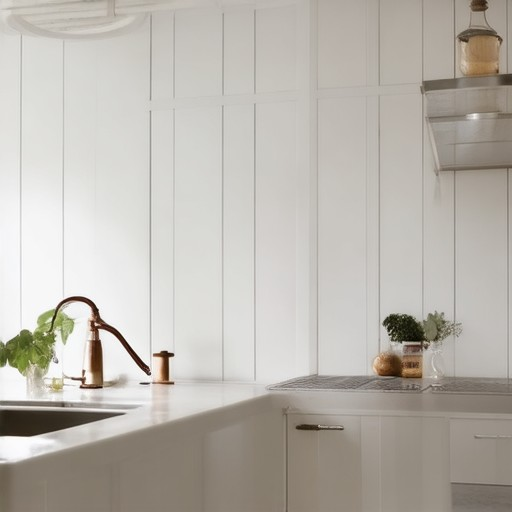
Best Layout for a Small Kitchen
When designing a small kitchen, it’s essential to maximize space while ensuring functionality. Here are the most effective layouts for small kitchens:
- Galley Kitchen Layout : Ideal for narrow spaces, this layout features a straight line of cabinetry along two sides with an island in the center. It maximizes vertical space and is efficient for prep work.
- U-Shaped Kitchen Layout : Utilizes the corner space effectively, making it perfect for small areas. It includes a breakfast bar and often has more storage options compared to other layouts.
- L-Shaped Kitchen Layout : Offers flexible storage solutions, especially in small kitchens. It can incorporate a pantry or additional storage in a corner alcove.
- Straight-Line or Peninsula Kitchen : Features a central island with seating, ideal for open-concept spaces. It can feel spacious despite its compact size.
- Island Kitchen Layout : A standalone island in the middle of the room, perfect for modern designs. It offers ample workspace and can include pull-out shelves for added convenience.
Consider the work triangle when planning your kitchen layout. The stove, sink, and refrigerator should be positioned to minimize distance and enhance efficiency. For small kitchens, the Galley and U-Shaped layouts often perform best in terms of functionality and storage.
To further optimize your small kitchen, focus on maximizing vertical storage solutions, using drawer inserts, and incorporating smart appliances. Consider consulting a kitchen designer for tailored advice to ensure your layout meets your specific needs and preferences.
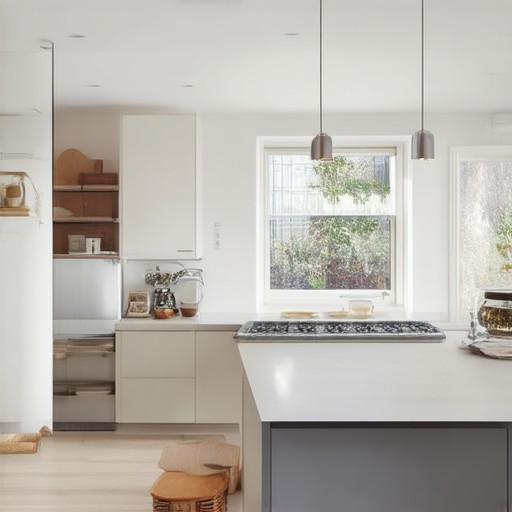
How to Arrange in a Small Kitchen
Organizing a small kitchen can seem challenging, but with thoughtful planning and creative storage solutions, you can maximize space and functionality. Here’s a step-by-step guide to help you achieve a clutter-free, efficient kitchen setup:
1. Assess Your Space and Needs
Start by evaluating your kitchen’s layout and the items you regularly use. Identify areas where space is limited and think about how you can optimize vertical and horizontal space.
2. Utilize Vertical Storage
Maximize your kitchen’s height with vertical storage options:
- Over-the-Door Organizers: Install organizers on cabinet doors for spices, utensils, or cleaning supplies.
- Magnetic Strips: Use magnetic strips to store knives or other metal items securely.
- Wall-Mounted Shelves: Add shallow shelves above the refrigerator for frequently used items like canned goods or snacks.
3. Keep Countertops Clutter-Free
Minimize items on countertops to prevent clutter:
- Magnetic Cords: Wrap electrical cords neatly around magnetic cord organizers attached to the wall or cabinetry.
- Drawer Dividers: Use dividers in drawers to separate items like lids, reusable containers, or utensils.
- Trays and Bins: Store small items like nuts, bolts, or jewelry in labeled trays or bins.
4. Optimize Under-Cabinet Storage
Make use of the space under your cabinets:
- Install Shelves: Add shelves to store items like snacks, spices, or baking supplies.
- Bins or Containers: Use clear bins to store things like cereal, rice, or other dry goods.
- Label Everything: Label bins or containers with words like “Snacks,” “Baking Supplies,” or “Pantry” to keep things organized.
5. Create a Functional Fridge Layout
Keep your refrigerator organized with these tips:
- Label Drawers: Label the fridge’s compartments so family members know where to put items.
- Group Similar Items: Store eggs, cheese, and milk together in one drawer, and meats in another.
- Use Bins: Place fruits and vegetables in clear bins to see what’s available at a glance.
6. Manage Appliance Placement
Arrange your appliances thoughtfully to enhance workflow:
- Centralize Prep Area: Position the sink and cutting board in a central location to streamline preparation.
- Use an Island: If space allows, install a small island for extra seating and prep space.
- Keep Trash and Recycling Close: Place a small bin near the door for easy disposal.
7. Enhance Lighting and Accessibility
Improve visibility and accessibility with:
- Task Lighting: Install LED lights under cabinets for better illumination.
- Caddy for Cleaning Supplies: Keep a caddy with soap, sponges, and scrubbers within arm’s reach.
8. Keep Frequently Used Items Accessible
Store commonly used items like cookware, cutting boards, and utensils in visible spots:
- Wall-Mounted Racks: Use racks to display items like oven mitts or tea towels.
- Counter Storage: Place items like a fruit bowl or a decorative tray on the counter for quick access.
9. Evaluate Your Floor Plan
Consider your kitchen’s layout to maximize space and efficiency:
- L-Shaped or U-Shaped Layouts: These configurations often offer more workspace and separation between prep and cooking areas.
- Island Placement: A small island can act as a prep surface and storage solution.
10. Use Wall Space Wisely
Free up counter space by mounting items on the wall:
- Pots and Pans: Hang pots and pans on a wall-mounted rack.
- Pegboard for Tools: Install a pegboard to store knives, scissors, or other tools.
11. Store Seasonal Items
Declutter your kitchen by storing seasonal items elsewhere:
- High Shelves: Store holiday dishes, decor, or infrequently used items on high shelves.
- Under the Bed: Use under-bed storage for items like extra chairs or seasonal clothing.
12. Consider Height and Reach
Design storage solutions to suit different heights:
- Lower Shelves: Ideal for children or pets, these shelves hold everyday items within their reach.
- Higher Shelves: Store less frequently used items like holiday decorations or spare ingredients.
By implementing these tips, you can transform your small kitchen into a functional and enjoyable space. Remember to regularly reorganize and maintain order to keep your kitchen running smoothly.
What are the top space-saving organization tips for a small kitchen?
Here’s a curated list of effective space-saving tips tailored for optimizing a small kitchen:
- Vertical Storage Solutions : Utilize tall, slim containers or wall-mounted shelves to store spices, oils, and other essentials vertically, freeing up counter space.
- Multi-Functional Furniture : Invest in pieces that serve dual purposes, like a breakfast bar that doubles as storage or a foldable table perfect for extra seating during gatherings.
- Appliance Consolidation : Opt for compact appliances like a combination microwave/convection oven or a single-door fridge to save space while maintaining functionality.
- Horizontal Strainers : Use horizontal strainers in the sink to drain water from vegetables or pasta without needing additional dishes.
- Sliding Doors : Install sliding doors on cabinets or pantries to maximize space when they’re open, allowing easy access without taking up floor space.
- Modular Lighting : Choose modular lighting systems that can be adjusted or moved easily, such as track lights or flexible desk lamps.
- Under-Cabinet Storage : Use the space under your cabinets for items like utensils, snacks, or cleaning supplies by installing shallow drawers or bins.
- Smart Layout Design : Plan your kitchen layout to minimize wasted space, such as arranging the sink and stove in a corner to maximize workflow efficiency.
By implementing these strategies, you can efficiently utilize every inch of your small kitchen, making it both functional and aesthetically pleasing.
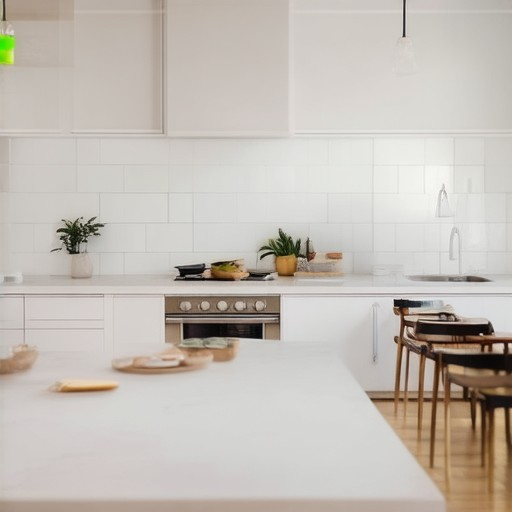
What are the best ways to organize a small kitchen for maximum efficiency?
Organizing a small kitchen can significantly enhance efficiency and ease of use. Here are some effective strategies to maximize your space and streamline your cooking process:
- Declutter and Purge Unnecessary Items: Begin by removing anything that doesn’t belong in the kitchen. This includes expired ingredients, broken appliances, and items you no longer use. Keep only essentials to free up counter space and storage.
- Utilize Vertical Storage Solutions: Small kitchens often lack horizontal space. Invest in vertical storage options like wall-mounted racks, hanging pots and pans, or tall jars for dry goods. This saves floor space while keeping items accessible.
- Streamline Your Workflow with a Dedicated Station: Create a prep station, baking station, or coffee corner. This involves grouping similar tools and ingredients together, making it easier to find what you need without searching through drawers.
- Opt for Multi-Functional Furniture: Consider pieces that serve dual purposes, such as a breakfast bar that doubles as storage or a kitchen cart that holds utensils and spices. This helps manage clutter effectively.
- Label Containers and Drawers: Use clear labels on containers or drawers to quickly identify what goes where. This reduces wasted time spent searching for items and ensures everything stays organized long-term.
- Cookware and Utensil Storage: Store cookware and utensils in airtight containers or drawer organizers. Use dividers to separate items by type, making it simple to grab what you need without rummaging through everything.
- Keep Countertops Clean: Limit items on countertops to those used daily. Use magnetic strips or trays to hold knives, scissors, or other frequently used tools nearby but off the surface.
- Plan Meals and Shop Strategically: meal planning can reduce waste and repetition. Use lists to shop efficiently, buying only what you need for upcoming meals. Store bulk items like grains and pulses in sealed containers for easy access.
By implementing these strategies, you can transform your small kitchen into a space that feels spacious, efficient, and easy to navigate. Remember to regularly maintain your organization to keep it effective over time.

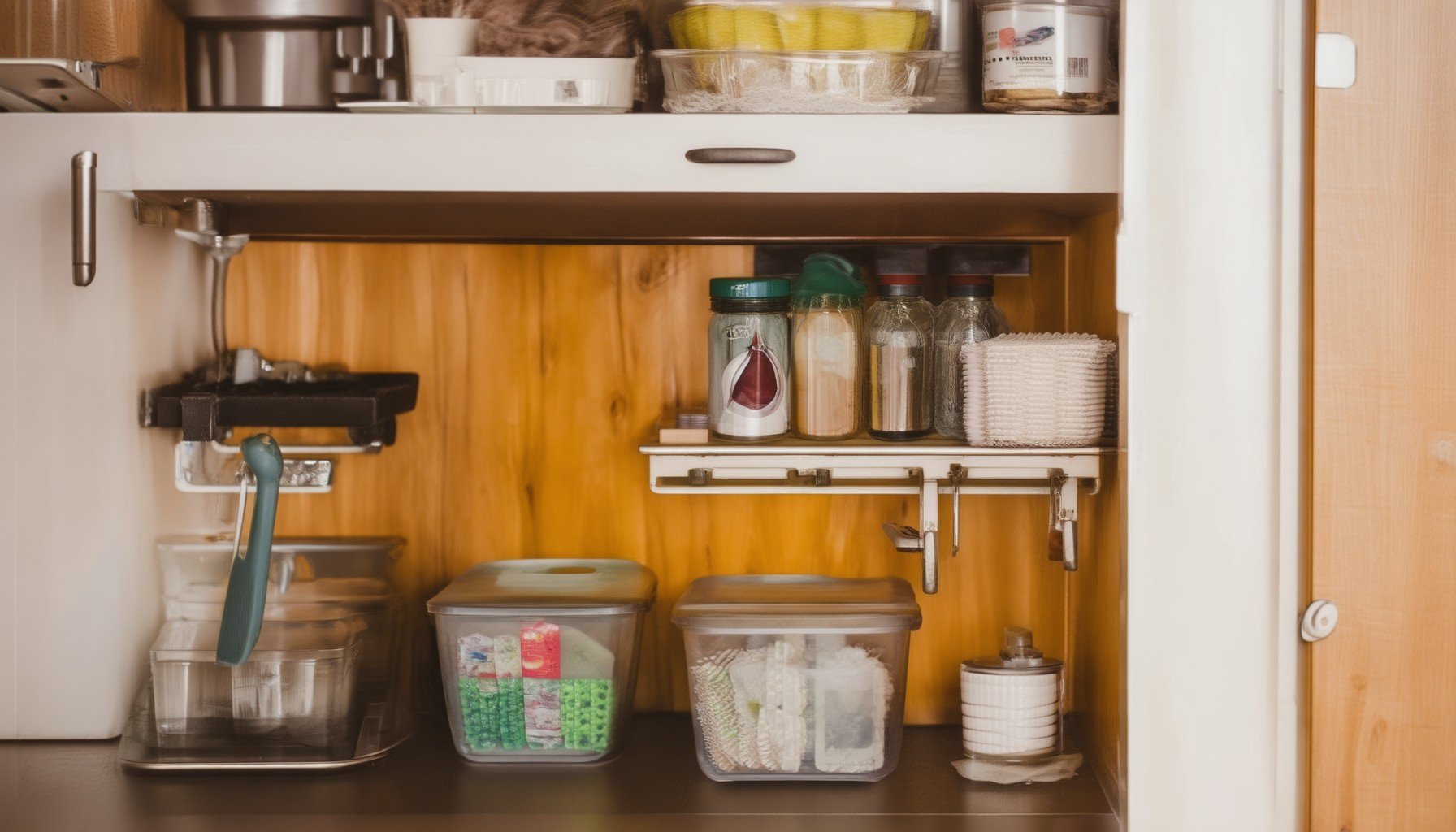
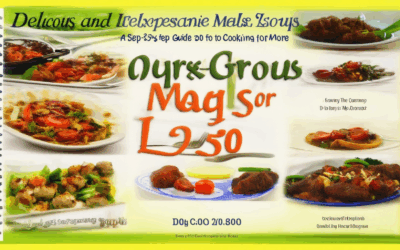

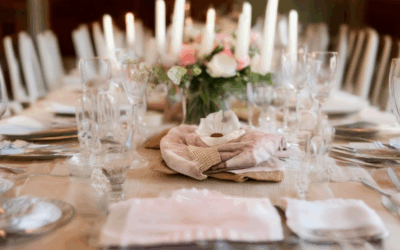
0 Comments